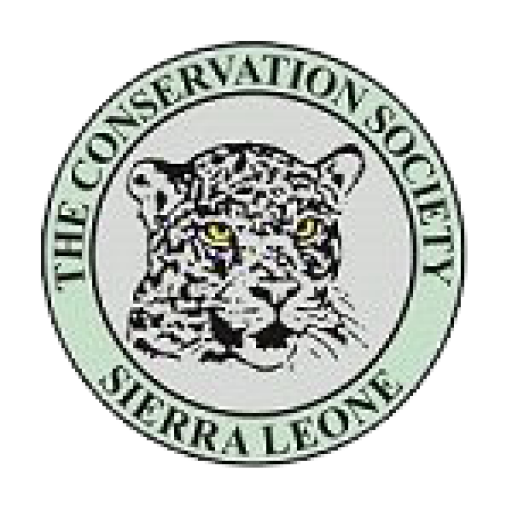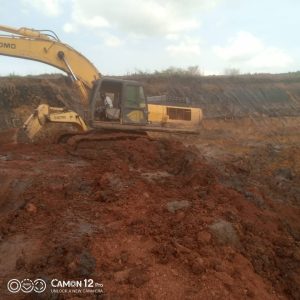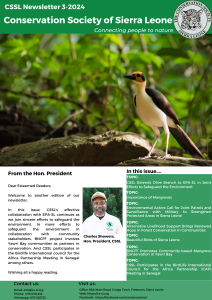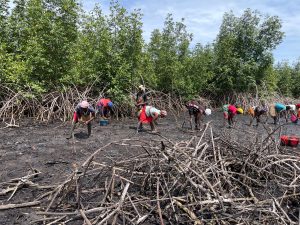Increasing deforestation puts biodiversity under threat
Increase in human population in recent years has led to increased pressure on forests by local communities for livelihoods and shelter. This has resulted to deforestation and environmental degradation and thereby contributing to depletion of natural resources.
Our answer: Linking Food Security and Biodiversity Conservation
It was against this backdrop that the Conservation Society of Sierra Leone (CSSL), in collaboration with Gola Rainforest Company Limited by Guarantee (GRC LG) received funding support from the Darwin Initiative, to implement a project dubbed; “Linking Food Security and Biodiversity Conservation under the REDD+”. As part of the REDD+ protects, it is aimed at protecting the Gola Rainforest National Park (GRNP) by helping forest-edge people sustainably increase crop yield and keeping annual deforestation of their community forests (CF) <2.5%. A core component of this project is the conduct of a community engagement and sensitization campaign through road shows, targeting 14 forest edge communities within the Gola landscape in Malema chiefdom, Kailahun district. The objective of the campaign was to bring the targeted communities up to speed with the realities of the project and also ensure their commitment to support forest management.
Awarness rising and environmental education in the communities
The sensitization activities were conducted in four points of the Darwin project communities from the 1st to 5th December, 2020. Each of the points is made up of a cluster of communities based on proximity, and include Mogbaima, Makpoima, Congo and Gollie respectively.
The sessions started with brief explanation on the background and purpose of the project. The team emphasized that it was a way to help reduce food insecurity while also protecting both their community forests and the protected area. Critical ways tipped to achieve that is through livelihood support and effective collaboration between partners and the 14 targeted communities. Communities were encouraged to provide active participation and involvement in the project work to enable project officials identify their needs or challenges.
Strengthening communicites in land management
The Land-use Planning and Co-management Officer, Christian Lansana said, there has been important issues going on with resource use and the Protected Area such as pressure from outsiders like logging, mining, etc. on community people and their forest. Therefore, he said the Darwin Initiative supported project aims at working with the community people to sustainably manage their resources and to provide livelihood so as to avoid over exploitation and encroachment into the Protected Area. Mr. Lansana continued that, in order to maintain the gains of the project, there is a need for the formation of Resource Mobilization Committees.
“…community members must have good knowledge of the project to enable them make meaningful contributions to the operations of the committee on available resources, and how they should be utilized to avoid resource use conflict”
Christian Lansana, Land-Use Planning and Co-Management, CSSL
In her presentation in all the points, Mariama Kargbo, CSSL’s Environmental Education (EE) Officer, stated the four components of the project and how they operate generally; the relevance of forest conservation and a means to engage in forest-based livelihood support without degrading or over-exploiting both the community forest and the Protected Area. She provided details illustrating through visual aids (flashcards) additional benefits that community people could derive from conserving the forest such as the air we breathe, watershed protection, prevention of soil erosion and mitigation of climate change effects.
Students educating their communities through dramas
School Nature Club (SNC) pupils also made meaningful contributions in educating the community people about the relevance of forest conservation through drama. Their involvement thrilled all and encouraged their parents’ participation in the roadshows the more. They were mobilized beforehand, and given key messages about wildlife conservation and the need for community forestry. The pupils took turns to give key messages to their community folks about the relevance of forest protection and also asked questions; they also respond to questions asked by the roadshow team.



